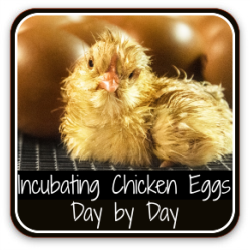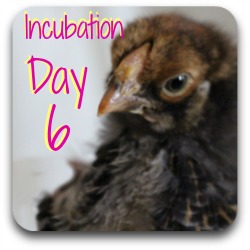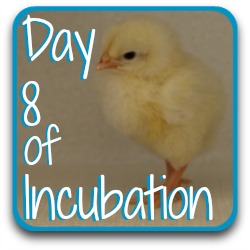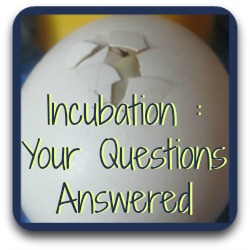- Home
- Incubation day by day
- Day 7
How to incubate eggs: day 7.
It's one week into the incubation period. What does our chick look like, what can we see, and what do we need to do?
We're now at the end of the first week in the incubator.
The collection of cells we started out with when we set our eggs has developed rapidly over these days. All the main parts of the chicken are present by the end of day 7; during the next two weeks we'll see those different parts growing and developing
It's now often possible to see some of these developments if we candle the eggs. But how do we do that, and exactly what should we be looking for?
What's going on inside the egg today?
- At the end of the first week of incubation the embryo is looking a little less like a spider and more like what most people would think of as the shape of a chick.
- If we took a look inside the developing egg today we'd see the blood vessels developing into a complex circulatory system.
- The eye of the embryo would be clearly visible, looking far too large for the size of the embryo.
- With a microscope, we might be able to see the start of the egg tooth developing.
How to incubate eggs: the chick's development in a viable incubation.
Please note: the image below is a commissioned piece and is subject to international copyright laws. I am the sole copyright owner.
It must not be used, copied or reproduced anywhere without my permission.
Contact me for details and permissions for this and all other images on this page.
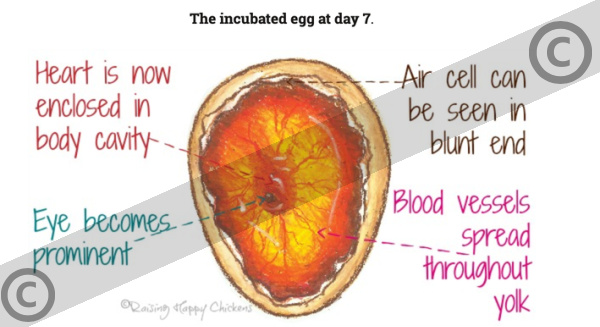
- On the feet, digits begin to appear which will grow into toes. A chicken usually has four on each foot although some breeds, such as Silkies and Faverolles, have five.
- The feather germs – the point at which the feathers will grow – begin to form on the tail and thighs.
- With a good candler the eye is now clearly visible as it's increasing in size. Today, the sclera, or outer layer, begins to develop. In humans we know this as the 'white' of the eye: in chickens the outer layer is the same colour as the iris.
- On top of the head there's now evidence of the comb starting to form.
- Finally today, the egg tooth is beginning to grow at the tip of the beak. On a newly hatched chick you'll see this as a small, pale tip. Here's how it looks on one of my newly hatched Light Sussex chicks.
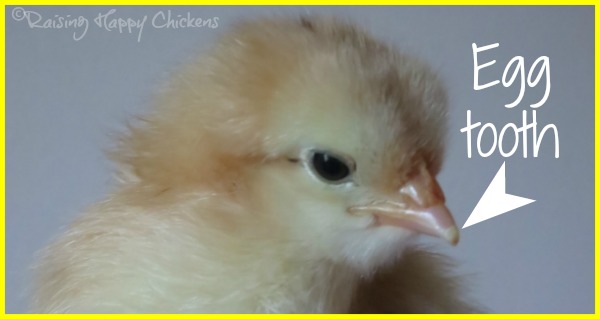
- The egg tooth is a critical part of incubation growth: it acts as a tiny hammer at the point of hatching, which the chick will use to break through first the membrane and then the shell itself.
- Once hatched, the chick no longer needs the egg tooth, so it falls off about 24 hours after hatch.
How to incubate eggs: candling at day 7.
What can we see if we candle the egg at this stage of incubation?
Candling involves shining a light through the egg to observe the development of the embryo. Follow this link if you're not sure how to candle.
At this stage, it's possible to see some of these developmental changes if the egg is candled. However, the embryo is still quite small, and detailed features may not be clearly visible yet.
Yesterday, we saw the development of the chorioallantoic membrane, whose job it is to carry oxygen and nutrition from the shell to the growing embryo, and to take waste away from it.
Today we can see evidence of this in the development of blood vessels which are spreading right through the egg.
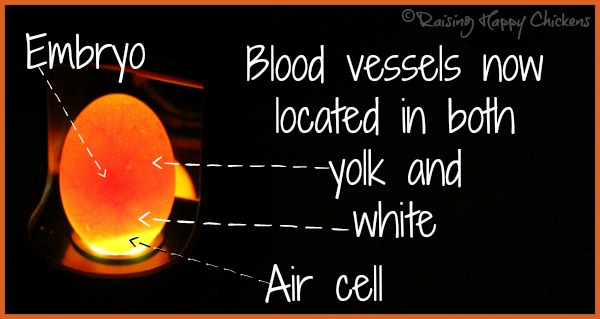
Also now becoming increasingly obvious is the air cell, which will continue to grow in the blunt end of the egg. This is where the chick will break through the membrane and take its first breath.
Below is the same picture but with the colour and saturation levels altered to show development more clearly.
The air cell isn't as obvious on this image as I needed to reduce the brightness.
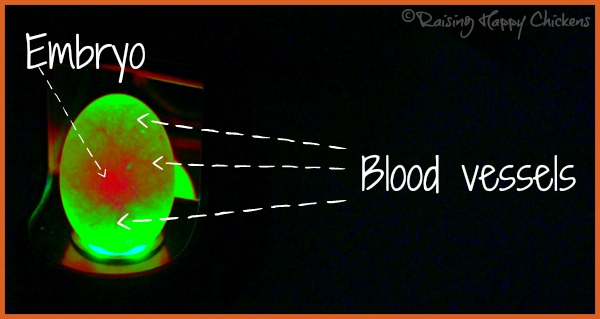
And below is the same egg, candled in a room with lights on. The air cell is obvious here.
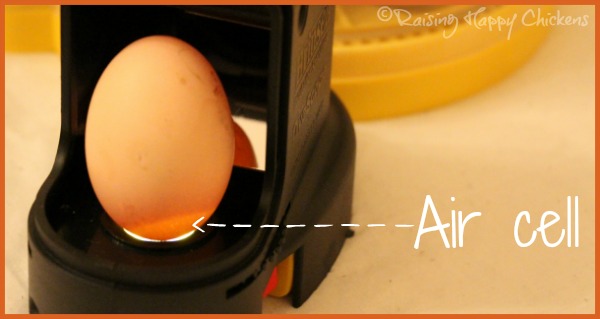
How to incubate eggs: what should we be doing today?
Candle the eggs and mark each one according to what you see.
- Take each egg in turn and candle it. Using the images above as a guide, try to identify the blood vessels and the embryo.
- Using a pencil, add a check mark on the shell where there is an obvious developing embryo. This enables you to differentiate eggs which are clearly developing from those which will need to be candled again in a few days.
- Mark the air cell. With the egg on your candler, look at the blunt end. You should see a clearly defined line, as in the picture above.
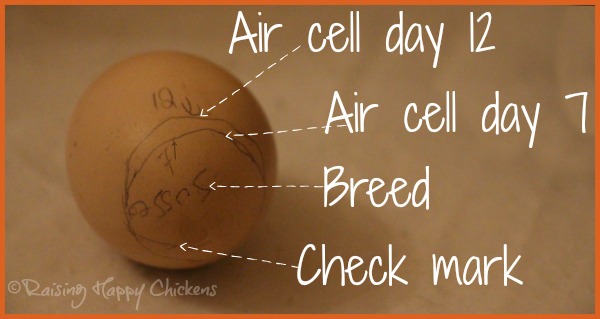
- Trace with your pencil around where the air cell is and mark it with the number 7. This indicates that the air cell was developing at day 7, and we'll be able to compare its growth as we progress through the next two weeks of incubation.
- Above is one of my Light Sussex eggs marked with the breed, air cell growth at days 7 and 12, and a check mark to tell me it's fertile and growing.
- If you can't see any development in some eggs, don't panic! Mark them with an 'x'. We will review them at day 10.
How to incubate eggs: question of the day.
I've candled my eggs at day 7 of incubation but I don't see any spider blood vessels or embryo. Should I throw them out?
Absolutely not! Put the eggs back into the incubator and have patience!
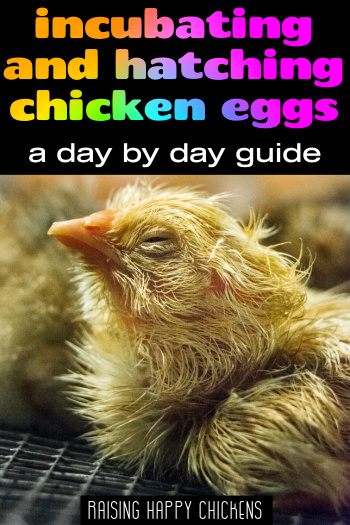 Pin me!
Pin me!Don't candle again for another three days, at which point you will almost certainly see development. The earliest I would discard eggs would be at day 14.
Can anything go wrong at this stage?
If you have kept temperature and humidity levels stable, and turned the eggs regularly, all should be well.
When candling, you may not see development in the egg at this early point of incubation. Try not to stress!
Chickens develop at different rates and the signs aren't always obvious, especially in dark-coloured eggs.
I've had chicks successfully hatch when they were showing no obvious signs of development at this stage.
I rarely discard an egg before day 14, unless it has obvious signs of 'oozing'.
Not at day 7 of incubation?
If you need to know how to incubate eggs from day 1, use the first of the button links below. If you need to go back just one day, use the second button; if you're ready to move forward to day 8 of incubation, use the third link.
Other pages you may find helpful.
Sources.
A lot of "facts" you'll find on the internet are often people's individual views, based on inaccurate information repeated from poor quality sources.
The information I provide in this article and others is based on both my own experience of incubating and hatching chicken eggs every year for over 13 years, but on evidenced facts from scientific, peer-reviewed research and books from highly respected and experienced poultry keepers such as Gail Damerow.
Some of the trusted sources I have used in this article are these.
Avitronics: Heart Rates. Pub. Avian ID, 2020.
Damerow, Gail: Hatching and Brooding Your Own Chicks. Pub. Storey, 2013. See my review, here.
Hall, C., et al: A new candling procedure for thick and opaque eggs and its application to avian conservation management. Pub. Journal of Zoobiology, 2022.
Hamburger, V and Hamilton, H L: A series of normal stages in the development of the chick embryo. Pub. Journal of Morphology, 1951.
Leonor, H., and Chaveiro, S: The Effect of Candling on the Hatchability of Eggs from Broiler Breeder Hens. Pub. Journal of Applied Poultry Research, 1993.
Phuphanin, A., et al: Smartphone-Based Device for Non-Invasive Heart-Rate Measurement of Chicken Embryos. Pub. National Center for Biotechnology Information, 2019.
Vargas, R., et al: Egg Candling Analysis Equipment Design: A Safety Solution. Pub. Journal of Social and Behavioural Sciences, 2018.
Wu et al: Egg fertility and reduced egg fertility, hatching success, and larval survival. Pub. Science Direct, 2003.
- Home
- Incubation day by day
- Day 7
